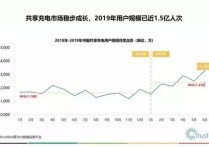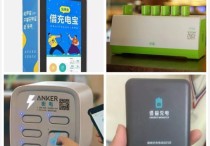【媒库文选】你最喜欢的下一个餐馆或许不是餐馆
Your Next Favorite Restaurant Might Not Be a Restaurant
你最喜欢的下一个餐馆或许不是餐馆
Jon Dominick Querolo 乔恩·多米尼克·奎罗洛
At Chili's and Maggiano's, the buzz is about their booming new side hustle-It's Just Wings. Same at Applebee's, where its startup, Neighborhood Wings, is doing a brisk business.
Both are online-only ventures that the chains quickly set up in hundreds of their kitchens-fresh takes on a business that the industry likes to call digital restaurants. The push into this model was tepid for years, but the pandemic created an urgent scramble to find new customers and put idle kitchen staffs back to work in a bid to revive a sector among the hardest hit by months of social-distancing and rolling lockdowns.
Additional chains, like Chuck E. Cheese,have started similar online brands. And just last week延安共享餐厅是哪个餐饮, Chipotle debuted a “digital-only” restaurant that bears its name, but only takes web orders and has no dining room. They've been joined by smaller operators who have a growing, easy-to-use infrastructure. One company, The Local Culinary, has eliminated the need to come up with a concept by franchising out 50 established digital brands.
Conventional wisdom has been that once the pandemic fades, people will flow back into eateries. But Americans are cooking more, especially younger adults. Consumers have invested in their kitchens, splurging on breadmakers and deep freezers. And for nine months, they've turned eating out occasions into ordering in-what the industry calls “off-premise.” Across the U.S., which is seeing daily Covid cases hit new highs, sit-down dining is still down more than half from what it was a year ago, according to data from OpenTable.
Serving food without a dining area isn't new-pushcarts and food stands have been around for centuries. But what's different today is that a mix of technology, abundant commercial space and increasing delivery speed from third-parties like Grubhub, Uber Eats and DoorDash have made expansion easier and cheaper.
Since luring diners doesn't matter, kitchens can be set up in a basement, warehouse or second floor. If you already have kitchens, like Chuck E. Cheese, which launched digital brand Pasqually's Pizza and Wings during the pandemic, the space is already paid for.
Given the economic incentives of lower operating costs, Americans' love of immediate gratification and that Covid may have permanently changed eating habits, it's not hard to see a future where the next McDonald's or TGI Fridays invests little in tables and waitstaff and instead seeks an advantage by spending on online advertising, digital bells and whistles and making better food at lower prices.
What's happening in restaurants mirrors the broader retail industry, where digital startups became national players quickly thanks to the reach of the internet and advancements in targeting consumers through digital marketing, like social media. Instead of taking a decade to gain customers across the country, they did it in a few years. Now virtual restaurants, started by established chains and entrepreneurs, are trying to replicate that.
For other chains, birthing a virtual concept has proven to be a quick and cheap way to target a new demographic,an issue that every legacy chain faces. In the past延安共享餐厅是哪个餐饮, such an effort would have meant spending oodles on marketing or building out a fleet of locations.

Richard Leteurtre, chef and owner of Bistro 1902, signed up with The Local Culinary after the pandemic temporarily shuttered his restaurant in Hollywood, Florida. His French cuisine doesn't hold up well when delivered, leaving him in a bind. But after a month, the digital brands he made food for accounted for about a quarter of his sales.
“It's a lot of work at the beginning, a lot of prep, a lot of mise en place. It's not easy money,” said Leteurtre, who has worked in restaurants for a quarter century. But “it's a part of the future.”
在奇利斯餐厅和马贾诺餐厅,让店员们忙得团团转的是蒸蒸日上的新副业——“只有鸡翅”。苹果蜂餐厅的情况也是如此,新项目“邻家鸡翅”生意火爆。
“只有鸡翅”和“邻家鸡翅”是这些连锁餐厅在数以百计的厨房里迅速开发的纯线上生意——是餐饮业喜欢称之为数字餐馆的业务上的新尝试。这种模式的推进工作多年来一直缺乏热情,但疫情促使该行业为实现复苏而紧急争夺新顾客,同时让无事可做的后厨员工返岗。餐饮业是遭受持续数月的社交隔离和接连不断的封锁措施打击最严重的行业之一。
还有一些连锁餐馆,如查克芝士,也启动了类似的线上品牌。就在上周,齐波特尔快餐连锁餐厅推出了同名“纯数字”餐馆,只接受网络订单,没有实体餐厅。采取同样做法的还有规模较小的经营者,它们的设施正在扩张且易于使用。一家名为“本地烹饪”的公司通过出售50家知名数字品牌的特许经营权让其他餐馆不必推出新的概念。
按照常理,一旦疫情退去,人们将会重新涌入餐馆。但美国人现在做饭比原来多了,尤其是年轻人。消费者投资自家厨房,在面包机和冷冻柜上大把花钱。9个月来,他们改外出就餐为在家订餐——餐饮业称之为“非堂食”业务。“开放餐桌”网站的数据显示,在美国新冠肺炎单日新增病例屡创新高之际,全国店内就餐人数至今仍不及一年前的一半。
无堂食供餐并不是新鲜事——手推车和小吃摊已经存在多个世纪。但今天不一样的是,技术的融合、充裕的商业空间以及第三方平台越来越快的配送速度降低了这种业务扩张的难度和成本。第三方平台包括“食物中心”公司、优食公司和多尔达什公司等。
既然吸引食客不再重要,那么厨房就可以设在地下室、仓库或二楼。如果厨房是现成的,那么空间的费用就省下了,例如查克芝士在疫情期间推出了数字品牌“帕斯夸利披萨和鸡翅”。
考虑到降低运营成本的经济动机、美国人对即时满足的偏爱以及新冠疫情可能永久改变饮食习惯,不难想象,未来下一家麦当劳或者星期五餐厅可能不再投资餐桌和服务员,而是通过投资线上广告和花哨的数字形式附加服务以及制作味美价廉的食品来获取优势。
餐饮业的现状是更广泛的零售业的缩影。在零售业,由于网络普及并且通过社交媒体这样的数字营销方式可以更好地锁定客户,数字领域的创业公司迅速走向全国市场。它们不需要花十年时间在全国范围内赢得消费者,短短几年就能做到。现在,由知名连锁店和企业家创办的虚拟餐馆正试图复制这一模式。
对其他连锁店来说,事实证明创造一个虚拟概念可以迅速且廉价地锁定新的客户群体,而锁定新客户是每一家老字号连锁店都面临的问题。过去,这种努力意味着在营销上一掷千金,或者建设一大批新店面。
佛罗里达州好莱坞市的比斯特罗1902餐厅因疫情临时关闭后,老板兼主厨里夏尔·勒特尔特与“本地烹饪”公司签约。他的法餐在配送之后不那么新鲜,这让他左右为难。但一个月之后,他为数字品牌供餐的业务占到他销售额的大约四分之一。
勒特尔特说:“起初要做很多工作,很多的预备,很多的食材准备。这钱赚得不容易。”但“这是未来的一部分”。他已经在餐馆里工作了四分之一个世纪。(卿松竹译自彭博新闻社网站11月18日文章)

手机浏览,点击图片保存二维码到相册,然后打开微信扫一扫选择本二维码图片就可以进入,电脑端微信“扫一扫”二维码,进入找聊天搭子平台,里面有找饭搭子、找对象、找陪伴服务等等






